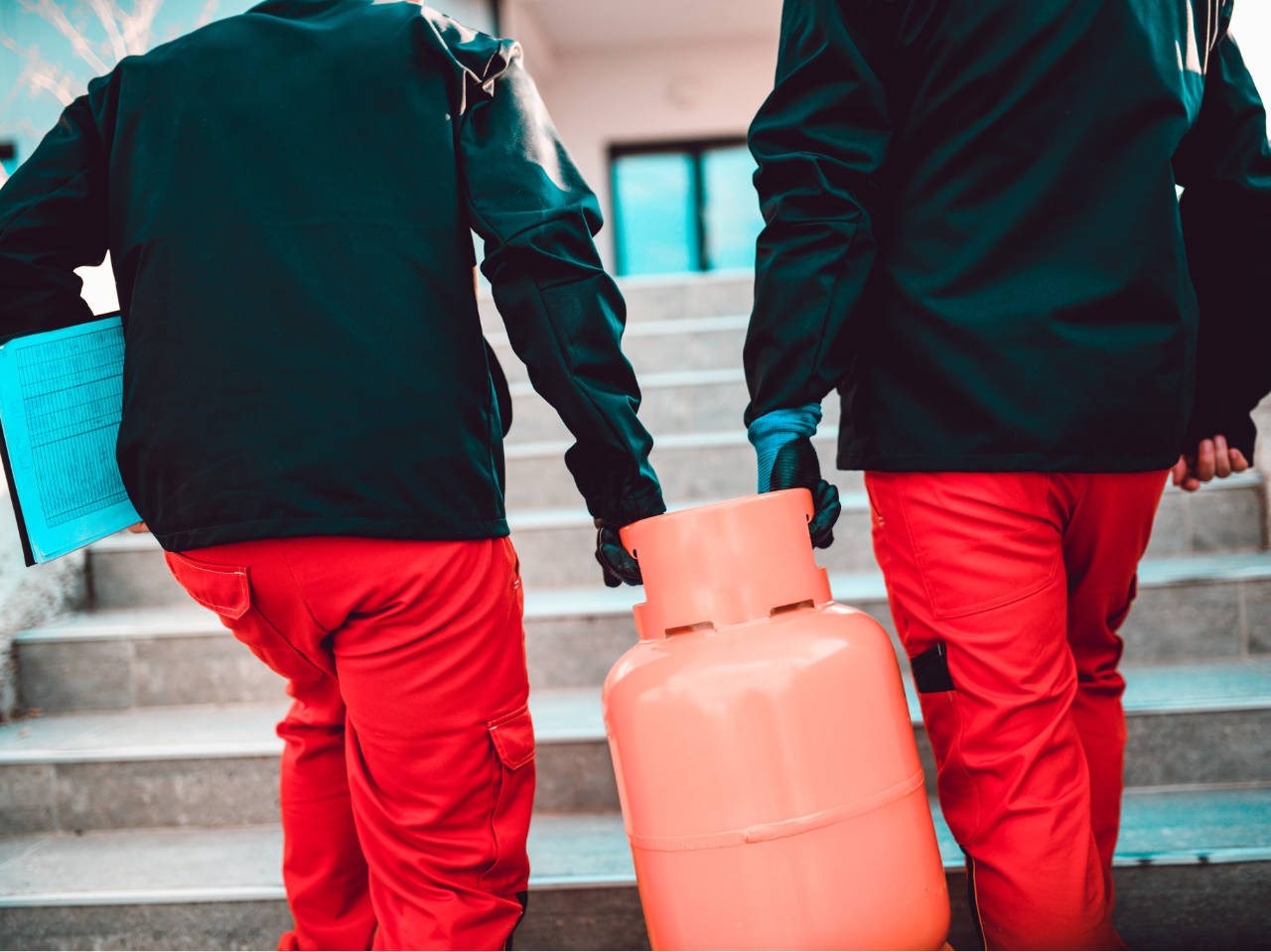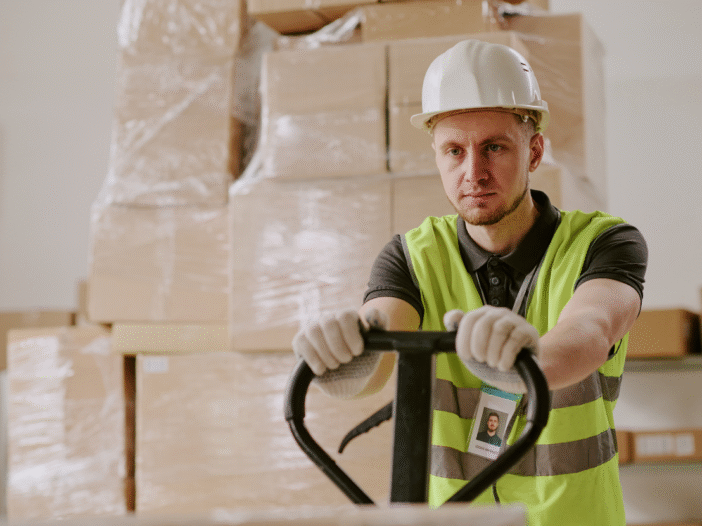
The TILE manual handling approach helps protect employees’ safety by encouraging them to assess a task systematically before they begin. Following TILE also helps employers to carry out more effective risk assessments.
Did you know that one in three accidents at work is caused by unsafe manual handling? The cost of accidents at work to UK businesses was a staggering £3.5 billion in 2021/22.
Manual handling injuries can happen in any workplace, and not just in high-risk industries. This means manual handling safety should be top priority for every organisation.
You can listen to an audio version of this blog here:
Manual handling is the process of lifting, lowering, moving, carrying, pushing, or pulling a load. It can involve not just objects but also people and animals. Manual handling risks are present in all work settings, from carrying boxes in an office to moving patients in a hospital.
There are health and safety laws and regulations in place to protect employees from hazardous manual handling tasks, specifically the Manual Handling Operations Regulations 1992. The regulations state that hazardous manual handling tasks should be avoided wherever possible to protect employees’ safety. Where this is not feasible, employers must carry out risk assessments and provide manual handling training that is suitable for an employee’s role.
What does TILE stand for?
TILE stands for Task, Individual, Load and Environment
The TILE approach enables employees and employers to systematically evaluate and plan manual handling tasks to ensure manual handling is carried out safely and efficiently.
TILE can support employers with the risk assessment process. Each element is assessed to identify potential hazards and risks associated with manual handling tasks. Once identified, appropriate measures can be implemented to control or eliminate these risks.
Task
This stage involves looking at the manual handling task itself and what is involved, such as the lifting, pushing, pulling, carrying and lowering of a load. You should assess how carrying out the task will affect the health and safety of the individual performing it, as well as others who could be affected.
The key is to identify the type and range of actions and movements involved, such as strenuous or repetitive movements, and consider whether they could result in any injuries. You should also identify alternative ways for the load to be moved that reduce the risk of injury.
When assessing the TASK stage of TILE manual handling, you should consider:
- What are the physical movements required for this task, including any excessive, sudden, or repetitive moves? Does the task involve overstretching or overreaching?
- What are the distances involved in moving or lifting a load for this task? How long should the task take, and what is the degree of physical effort required?
- What is the pace of work required for this task, and is there adequate time given for rest and recovery both during and after the task?
- Have measures been considered to reduce or avoid the amount of physical lifting and handling required for this task? If so, how can this be achieved?
Individual
This stage involves assessing who will be carrying out the task. Different people have different capabilities, training, physical strength and health conditions. You should assess their existing manual handling skills, previous manual handling training and experience. Consider whether they require additional help and support to complete the task.
It is important that employees are aware of the safe lifting weights. These weights vary depending on numerous factors, including the individual’s physical capability, the nature of the load, and the equipment available. The Health and Safety Executive has published information on weight limits.
When assessing this stage of TILE manual handling, you should consider:
- Does the individual have any health-related impairments or disabilities?
- Does the individual have a history of back pain or muscular injury?
- Does the person have the physical capabilities to carry out the task?
- Have they undertaken manual handling training?
- What information do they need to know to safely complete the task?
Everyone has different capabilities which can vary at different times, so this needs to be taken into account.
Load
Understanding what is being handled or moved is vital for safely completing the task. The load should be properly assessed, including looking at its contents to see if they are dangerous or bulky and its physical containers (for example, are there carrying handles?) Examine how the load is secured, and how the weight is distributed. Assess if the contents are likely to move during handling and what the implications would be.
When assessing the LOAD stage of TILE manual handling, you should think about:
- Load contents. Is it hazardous? Is there a risk of spillage, for example?
- Weight of the load.
- The challenges in moving the load, such as sharp edges, unstable or unsecured contents, or the impact on visibility.
- How the load will be moved. Can it be grasped, grabbed, carried, or held safely?
To make manual handling safer, a load could be split into smaller parts or suitable equipment like trolleys could be used. When handling hazardous substances, wearing appropriate personal protective equipment (PPE) such as gloves, goggles, and masks is crucial to minimise the risk of exposure and injury.
Environment
Manual handling a load through a factory, office or warehouse can involve different types and levels of flooring, access ramps, steps, and narrow corridors. This means assessing the entire environment is essential to minimise risk. Assessment may include examining how the environment, such as flooring, lighting, ventilation and humidity can affect the task. From potential trip hazards to access to light or shutter switches, it is vital the entire route is planned so you can safely navigate the environment.
When assessing the environment stage of TILE manual handling, you should consider:
- The state of the ground – is the floor slippery or uneven? How stable is it and are there any slopes or inclines to navigate?
- How much lighting is there, and what could affect visibility?
- What variations are there during the route, such as steps or varying heights?
- How will external factors such as hot weather, fog, humidity, or extreme temperatures affect the task?
- Where and how are loads stored and accessed?
Regular maintenance and safety checks of the work environment are essential to maintain a safe and hazard-free space.
What does LITE stand for?
LITE is a reordering of the same key stages as TILE and stands for Load, Individual, Task and Environment.
It doesn’t matter whether you use TILE or LITE during a manual handling risk assessment, as long as each of the four key stages for manual handling is properly assessed and every step is taken to reduce risk of injury.
What does TILEO stand for?
TILEO also stands for Task, Individual, Load and Environment, but also includes Other factors, such as assessing the need for and impact of additional equipment needed for the task, such as wearing PPE clothing or using mechanical lifting aids.
Other factors are linked to the industry sector or load itself, such as manoeuvring medical or hazardous waste or dealing with extreme loads, such as in construction.
When assessing other factors, you should consider:
- Is the load in a dangerous environment, requiring equipment such as PPE clothing, masks, or other specialised clothing? What impact does this have on the task? For example, will PPE restrict movement or cause visibility difficulties for the individual?
- What is the correct equipment for the task? Is there a need for mechanical lifting aids, such as trolleys or jacks?
Why is TILE manual handling important?
Employers have a legal obligation to protect people involved in manual handling operations as part of the Manual Handling Operations Regulations 1992.
By law, employers must:
- Where possible, avoid the need for manual lifting and handling where there is a risk to health.
- Conduct regular manual lifting risk assessments.
- Provide manual handling training and information to staff based on the findings of the risk assessments.
- Keep records of reportable incidents caused by manual handling.
In UK workplaces more than 10,000 injuries a year are caused by poor manual handling. By applying TILE principles, employers and employees can systematically assess and mitigate the risks associated with manual handling tasks.
Manual handling online training
The TILE manual handling approach provides a structured framework to protect the safety of employees undertaking manual handling tasks.
Ensure your employees understand safe systems of work to reduce workplace injuries with our Manual Handling online training course. The course is designed for employees across all sectors and has been developed by our Chartered Practitioners and experienced health and safety consultants and is IOSH Approved.
We also offer Manual Handling in the Office which raises awareness of manual handling hazards in the office and what steps can be taken to prevent musculoskeletal disorders.

Adam Clarke
Managing Director (Consulting)
